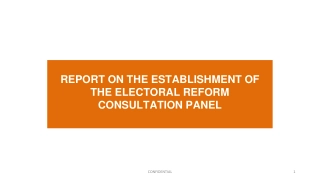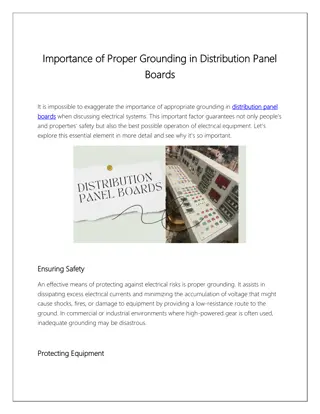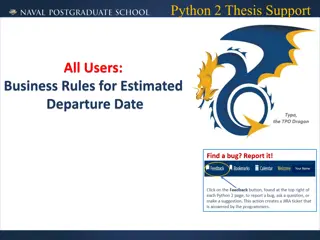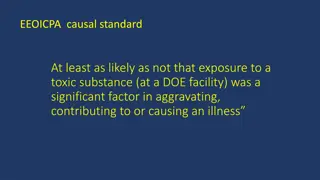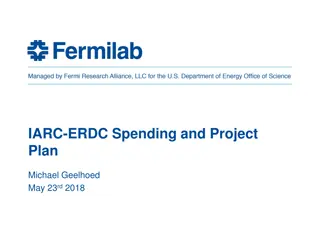
Understanding EDDs for Regional Economic Development
Learn about Economic Development Districts (EDDs), multi-jurisdictional entities driving regional economic planning through collaboration with public, private, and non-profit sectors. Discover the designation process, benefits, and success stories associated with EDDs.
Download Presentation

Please find below an Image/Link to download the presentation.
The content on the website is provided AS IS for your information and personal use only. It may not be sold, licensed, or shared on other websites without obtaining consent from the author. If you encounter any issues during the download, it is possible that the publisher has removed the file from their server.
You are allowed to download the files provided on this website for personal or commercial use, subject to the condition that they are used lawfully. All files are the property of their respective owners.
The content on the website is provided AS IS for your information and personal use only. It may not be sold, licensed, or shared on other websites without obtaining consent from the author.
E N D
Presentation Transcript
Roadmap to Forming an EDD
What is an EDD? They are multi-jurisdictional entities, commonly composed of multiple counties and in certain cases even cross-state borders. Eligible entities include: public organization formed through an inter-governmental agreement providing for joint exercise of local government powers public organization established under state-enabling legislation for the creation of a multi-jurisdictional area-wide planning organization non-profit organization They lead the locally-based, regionally driven economic development planning process that leverages the involvement of the public, private and non-profit sectors to establish a strategic blueprint for regional collaboration (i.e. CEDS). 2
What Organizations are designated to serve an EDD? A listing of EDD s by state is included in the Economic Development Directory on EDA s website - https://eda.gov/resources/directory/ What do EDD s do? Build capacity for the region Maintain and implement a Comprehensive Economic Development Strategy (CEDS) for the region Promote regional economic development through coordination and implementing economic activities in the District Carry out economic development research, planning, implementation and advisory functions identified in the CEDS Coordinate the development and implementation of the CEDS with other local, State, Federal and private Organizations Some recent success stories from EDD s around the nation can be found here. https://eda.gov/success-stories/edd/ 3
What is the benefit of being an EDD? EDA network of Partners Eligible for EDA Partnership Planning program (non-competitive continuation grant) Maintain a CEDS, which is an eligibility requirement for several of EDA s competitive funding programs Can use substantial direct benefit to meet distress criteria for eligibility EDA network of Partners 4
How does an EDD get designated? EDA may designate a Region as an EDD upon the request of a district organization, if the Region meets certain criteria. The process for seeking designation involves several steps, that should be done in close consultation with EDA Regional Office staff 1. EDA approved CEDS 2. Verify eligibility based on EDA s distress Criteria 3. Review appropriateness of organizational structure and staffing capacity 4. Draft background and economic justification narratives 5. Formal application requesting EDD Designation 5
1. EDA approved CEDS Competitive funding available under EDA s Short Term Planning Program CEDS Strategy Committee o represent the main economic interests of the region o Meet regularly to guide the CEDS process CEDS Content Guidelines https://eda.gov/files/ceds/CEDS-Content-Guidelines-full.pdf Required components: Background Section SWOT Action Plan Performance Measures Addresses resiliency 30-day public comment period & Governing Board approval 6
2. Eligibility based on EDAs Distress Criteria The primary data review includes the 24-month average unemployment rate and per capita income at the county level for each county in the proposed EDD. Additional distress data at the municipal or census tract level may also be taken into consideration. PCI 80% or lower than the US per capita income 24-month average unemployment rate at least 1% higher than the US rate Census Table DP-03: Selected Economic Characteristics 7
3. Organizational Structure and Staffing Capacity Current copies of the entities Articles of Incorporation, By-Laws, Intergovernmental Agreement, and/or Enabling Legislation for the applicant district organization; List of participating jurisdictions and rationale for excluding non-participants contained within the geographic boundary; Governing Board and Executive Committee membership roster for the applicant district organization In implementing 13 C.F.R. 304.2(c). The district organization s staff roster that includes each staff member s educational background and professional experience. Documentation or narrative demonstrating compliance with 13 CFR 304.2(c)(4) pertaining to public participation and transparency. 8
4. Background and Economic Justification Narratives Background Narrative The background narrative should give a high-level overview of the proposed EDD. This must include the composition and location of the proposed EDD, as well as information on the geographic areas that would comprise the new EDD, if designated. Economic Justification Narrative The justification must include a written analysis that supports the proposed region being designated as an EDD. For example, the Region may: Share economic and community development challenges and opportunities Share employment patterns, workforce characteristics, or a workforce development strategy Share transportation access issues and/or transportation networks Have industry or business clusters in common with, or tied to, clusters located within the District s existing boundaries; Share natural resource planning (e.g., watershed planning) with the areas located within the District s existing boundaries; and Share resources that affect economic development, such as high-speed telecommunications access (see 13 C.F.R. 303.7(b)). 9
5. Formal application requesting EDD Designation Written Requests for Designation o Letter from Board Chair o Letter of concurrence from Governor s Office o Letters or Resolutions of support for the EDD from a majority of the counties in the proposed EDD Overview o o o Background narrative Maps Economic Justification narrative Information on Organizational Structure and Staffing Capacity o Current copies of the entities Articles of Incorporation, By-Laws, Intergovernmental Agreement, and/or Enabling Legislation for the applicant district organization; o List of participating jurisdictions and rationale for excluding non-participants contained within the geographic boundary; o Governing Board and Executive Committee membership roster for the applicant district organization In implementing 13 C.F.R. 304.2(c). o The district organization s staff roster that includes each staff member s educational background and professional experience. o Documentation or narrative demonstrating compliance with 13 CFR 304.2(c)(4) pertaining to public participation and transparency. 10
EDA Regulatory Requirements for EDDs 13 CFR 304 Economic Development Districts https://www.ecfr.gov/current/title-13/chapter-III/part-304 Governing Board - must demonstrate that its governing body is broadly representative of the principal economic interests of the region, including the private sector, public officials, community leaders, representatives of workforce development boards, institutions of higher education, minority and labor groups, and private individuals. In addition, the governing body must demonstrate the capacity to implement the EDA approved CEDS. Staff employ a professional staff drawn from qualified persons in economic development, planning, business development or related disciplines. 11
EDA Regulatory Requirements for EDDs 13 CFR 304 Economic Development Districts (cont d) https://www.ecfr.gov/current/title-13/chapter-III/part-304 Public Participation and Transparency - The governing bodies of District Organizations must provide access for persons who are not members to make their views known concerning ongoing and proposed District activities Meetings open to the public Parliamentary procedures Public notice Availability or audited statements, annual budgets and minutes of public meetings Conflicts of interest policy Peer Performance Evaluation At least every 3-years, EDA must evaluate the management standards, financial accountability and program performance of each EDD, so long as the District Organization continues to receive Investment Assistance. For the evaluation, EDA must include the participation of at least one other EDD. 12
EDA Regulatory Requirements for EDDs 13 CFR 303 Planning Investments and Comprehensive Economic Development Strategies https://www.ecfr.gov/current/title-13/chapter-III/part-303 CEDS Process Maintain a CEDS Strategy Committee Submit a new Revised CEDS to EDA at least every 5-years Submit a CEDS Annual Performance Report in interim years between Revised CEDS Where are we as a Region? How are we doing as a Region in getting there? Where do we want to go as a Region? How do we get there as a Region? 13
U.S. Economic Development Administration U.S. Department of Commerce www.eda.gov Michelle Velazquez Supervisory Program Manager Tel: (312) 789-9766 Email: mvelazquez@eda.gov 14

